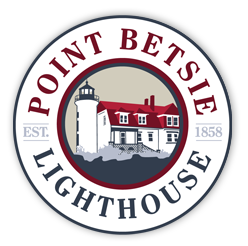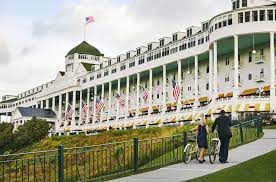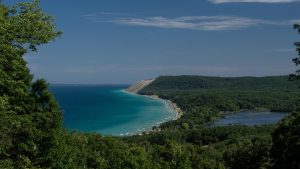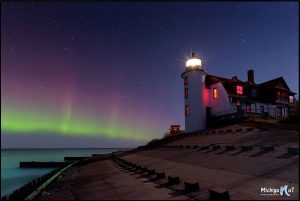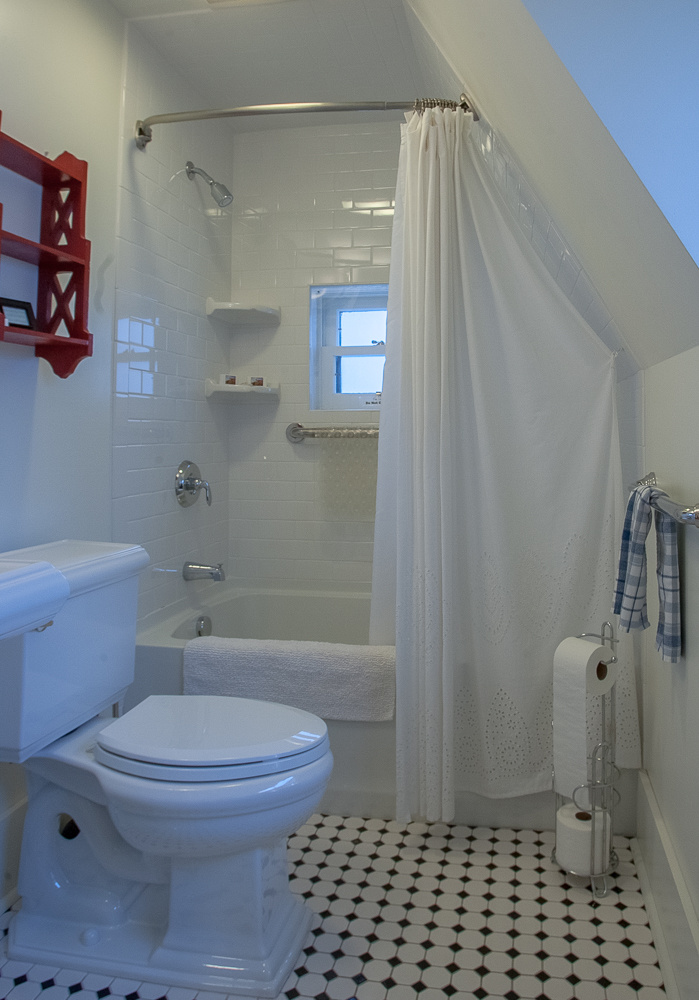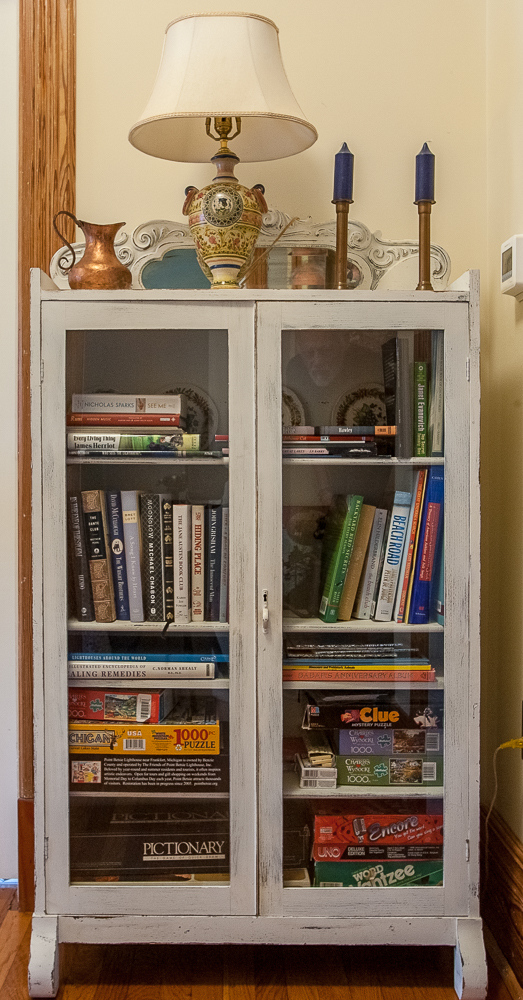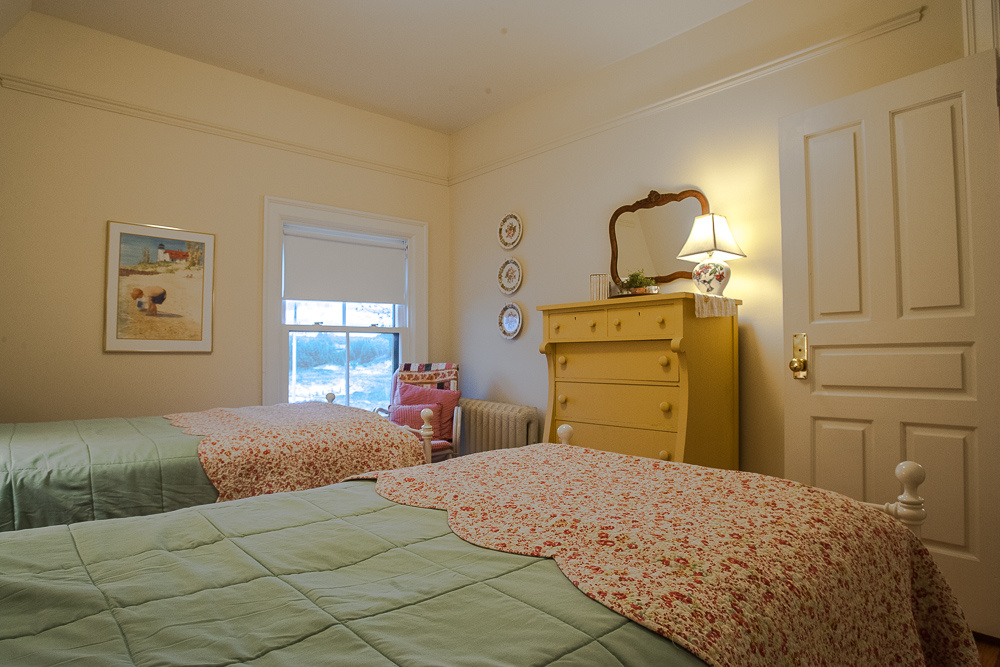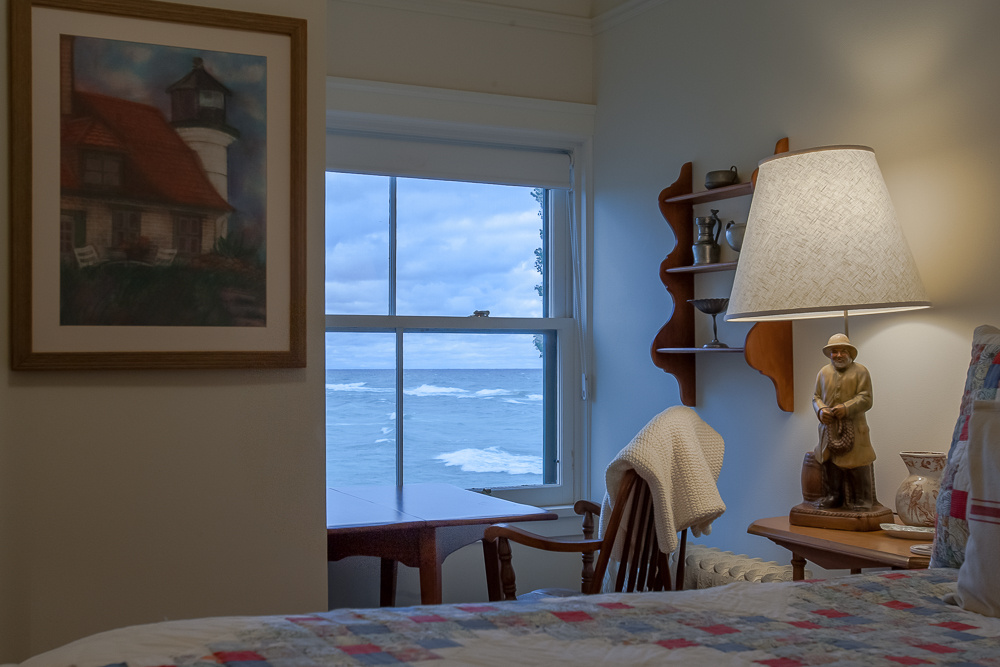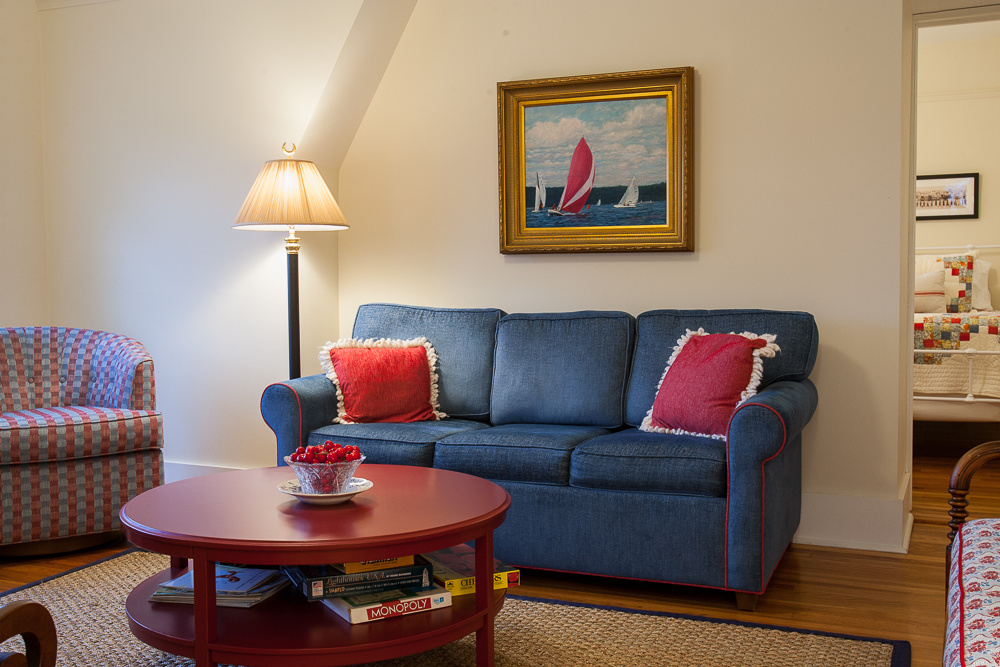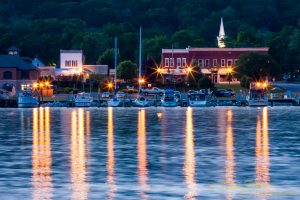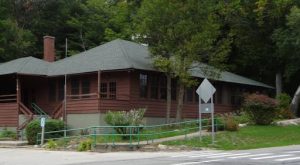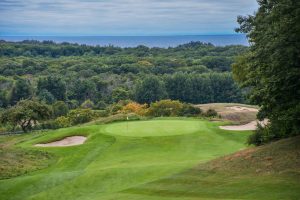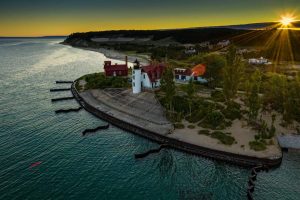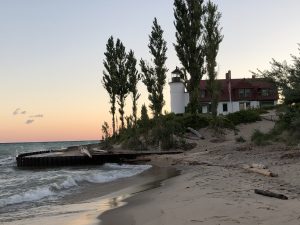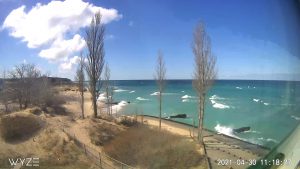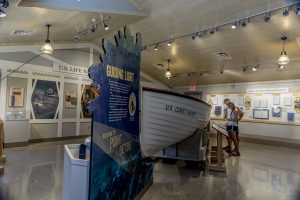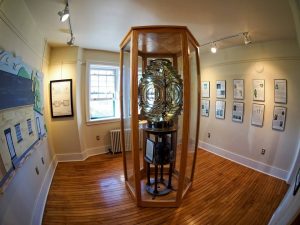
THE SECOND FRESNEL LIGHT AT POINT BETSIE
This lens projected a beam from Point Betsie Lighthouse throughout nearly the entire twentieth century. The light could be readily seen by Lake Michigan mariners from a distance of approximately fifteen miles with a high range of 27 miles.
Built according to the design of the legendary French scientist Augustin-Jean Fresnel, its structure is bronze and its prisms are French glass. Now, at least 115 years old, this lens does not display a manufacturer’s mark, suggesting that it may be one of the relatively few Fresnel lenses assembled at the U.S. Lighthouse Service’s depot on Staten Island, New York.
Records indicate that this six-sided bulls-eye lens was installed at Point Betsie in 1900 as an improvement over the tower’s original lens, which was of an earlier fourth-order design. The predecessor yielded a fixed white light which flashed every 90 seconds, 53 feet above the lake’s level. Oil burners, fueled generally with kerosene, provided the flame throughout the early decades of use.
This lens, as rotated initially by descending weights and later by an electric motor and drive gear, yielded a 1.3 second flash every ten seconds, separated by eclipses of 8.7 seconds. From the early 1920s to the present day, Point Betsie’s light has been provided by elecricity. A 1,000 watt bulb provided this lens’ beam for many decades, while its illumination previously came from an incandescent oil vapor lamp similar in concept to a camping lantern.
Replaced with an acrylic light system in 1996, the lens was placed in storage. In 2010 it was uncrated, professionally restored, and installed in the current display at Point Betsie by Jim Woodward, a retired U.S. Coast Guardsman, Lighthouse Consultant and lampist. You can see this Fourth Order Fresnel lens when you visit the “lens room” at the Lighthouse Museum.
By Jonathan Hawley / All Rights Reserved for Point Bestsie Lighthouse
